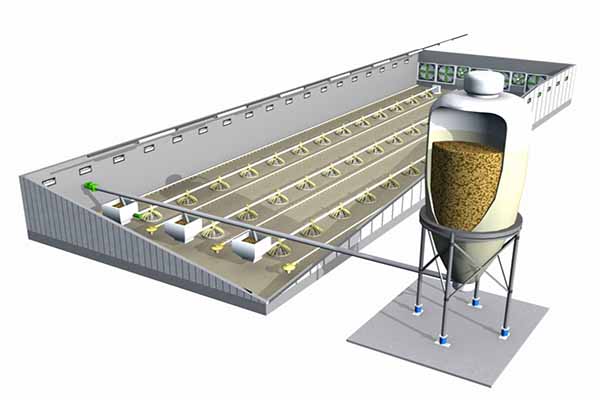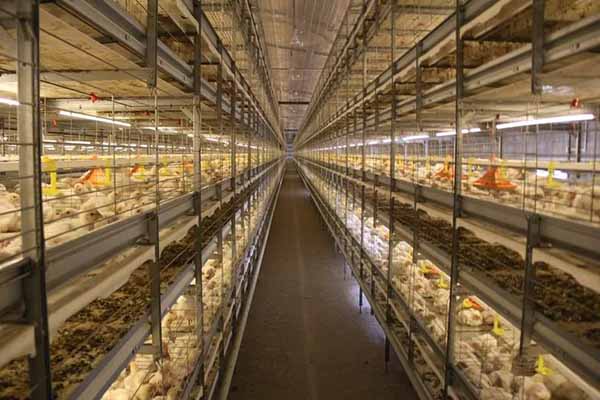How to Start a Chicken Farm in Australia: A Comprehensive Guide
Time : 2025-06-24
Starting a chicken farm in Australia can be a rewarding venture, providing fresh, high-quality eggs and poultry products to the market. With the right knowledge and planning, you can establish a successful chicken farm. This guide will cover everything you need to know from choosing the right location to investing in professional equipment.
1. Research and Planning
Before diving into the business, thorough research and planning are essential. Understand the market demand, potential profitability, and the legal requirements for running a chicken farm in Australia.
1.1 Market Research
Conduct market research to identify the demand for chicken products in your area. Analyze consumer preferences, the competitive landscape, and potential growth opportunities.
1.2 Business Plan
Create a comprehensive business plan outlining your goals, marketing strategy, financial projections, and operational procedures. This will serve as a roadmap for your chicken farm and help secure funding if needed.

2. Choosing the Right Location
The location of your chicken farm plays a crucial role in its success. Consider the following factors when selecting a site:
2.1 Accessibility
Choose a location that is easily accessible to suppliers, customers, and workers. Proximity to transportation routes can significantly reduce costs and improve efficiency.
2.2 Land Availability
Ensure that the land has adequate space for chicken coops, pens, and other necessary infrastructure. The land should also be suitable for agricultural use and have proper drainage.
2.3 Environmental Considerations
Consider the environmental impact of your farm. Choose a location that is away from residential areas and sensitive ecosystems to minimize potential conflicts.
3. Obtaining Necessary Permits and Compliance
Running a chicken farm in Australia requires compliance with various regulations and obtaining the necessary permits. Here are the key steps:
3.1 Local Council Approval
Contact your local council to understand the zoning requirements and obtain approval for your farm. Ensure that your plans meet local regulations regarding size, distance from residential areas, and waste management.
3.2 Biosecurity Measures
Australia has strict biosecurity regulations to prevent the introduction and spread of diseases. Familiarize yourself with these requirements and implement biosecurity measures on your farm.
3.3 Environmental Compliance
Obtain the necessary environmental permits, such as an Environmental Management Plan, to ensure that your farm complies with water and air quality standards.
4. Designing Your Chicken Coops
Properly designed chicken coops are crucial for the health and productivity of your flock. Consider the following factors:
4.1 Size and Layout
Design coops that provide adequate space for your chickens to move around, eat, and sleep. Ensure that the layout is conducive to efficient cleaning and maintenance.
4.2 Temperature and Ventilation
Chicken coops should be well-ventilated and maintain a comfortable temperature year-round. Install appropriate insulation and ventilation systems to regulate the environment.
4.3 Lighting
Provide natural and artificial lighting to mimic the natural daylight cycle. Proper lighting can improve egg production and overall flock health.

5. Selecting the Right Equipment
Investing in high-quality equipment is essential for the success of your chicken farm. Here are some key pieces of equipment to consider:

5.1 Feeders and Waterers
Choose automated feeders and waterers to ensure that your chickens receive consistent nutrition and hydration. This will also save you time and labor.
5.2 Egg Collecting Systems
Implement an egg collecting system that minimizes handling and reduces the risk of damage. Consider automated systems that can transport eggs to a central collection point.
5.3 Heat Lamps and Incubators
Use heat lamps and incubators to maintain optimal temperatures for hatching and brooding chicks. This will ensure the health and survival of your flock.
6. Managing Your Flock
Proper flock management is crucial for the health and productivity of your chickens. Consider the following tips:
6.1 Nutrition
Provide a balanced diet tailored to the needs of your chickens. Use high-quality feed and consider consulting a veterinarian or nutritionist for advice.
6.2 Health and Welfare
Regularly monitor your flock for signs of illness or stress. Implement disease prevention strategies and maintain a clean environment to ensure the overall welfare of your chickens.
6.3 Egg Quality
Focus on maintaining egg quality through proper nutrition, biosecurity measures, and optimal living conditions. Regularly inspect eggs for any defects or irregularities.
7. Marketing and Distribution
Develop a marketing strategy to promote your chicken farm and distribute your products effectively:
7.1 Branding
Create a strong brand identity that reflects the quality and values of your farm. This will help you differentiate from competitors and attract customers.
7.2 Distribution Channels
Identify the best distribution channels for your products, such as direct sales, partnerships with retailers, or online marketplaces.
7.4 Customer Relationship Management
BUILD and maintain strong relationships with your customers by providing excellent customer service and addressing their needs promptly.
Conclusion
Starting a chicken farm in Australia requires careful planning, compliance with regulations, and a focus on quality and sustainability. By following this comprehensive guide and investing in the right equipment and management practices, you can establish a successful and profitable chicken farm.











